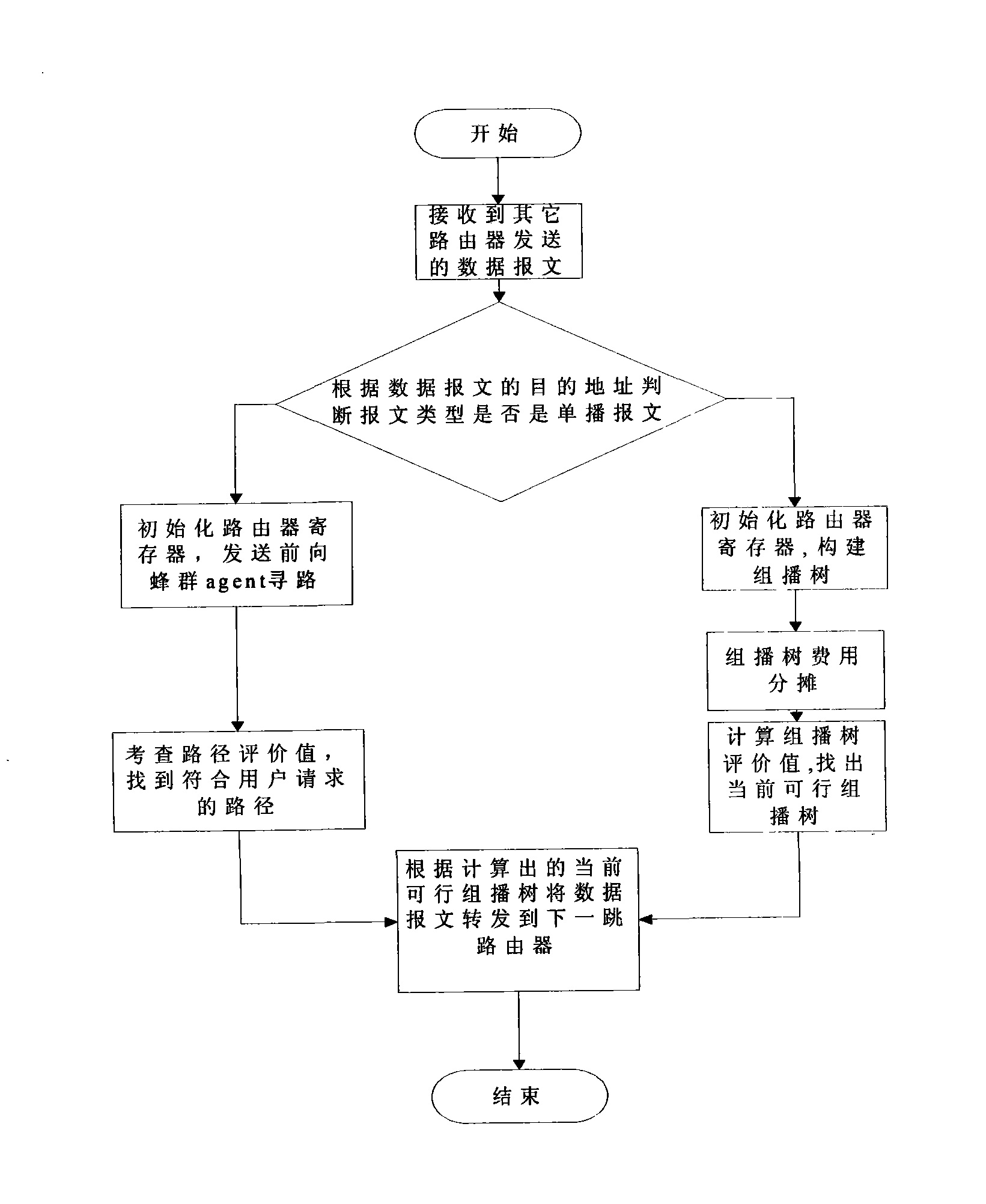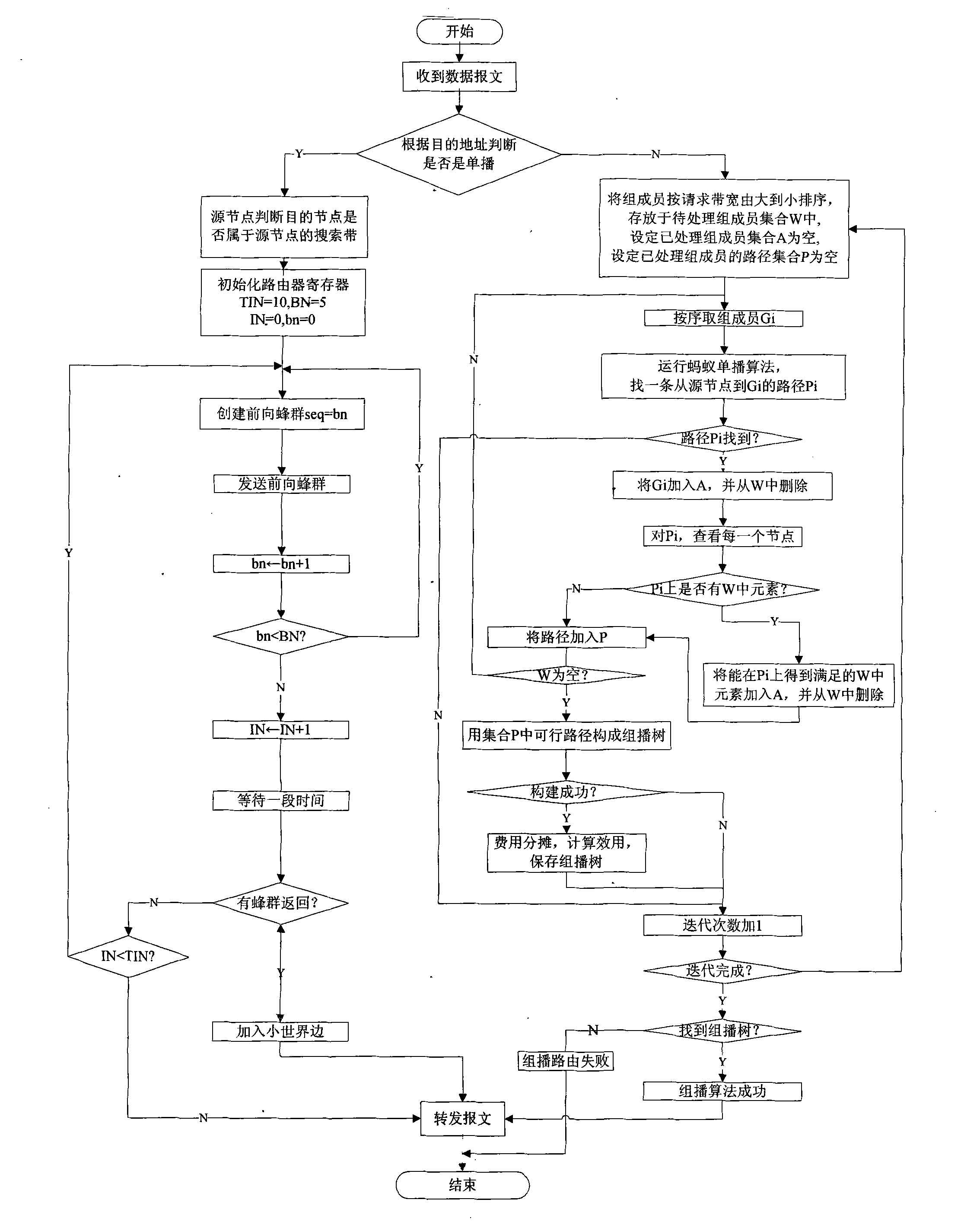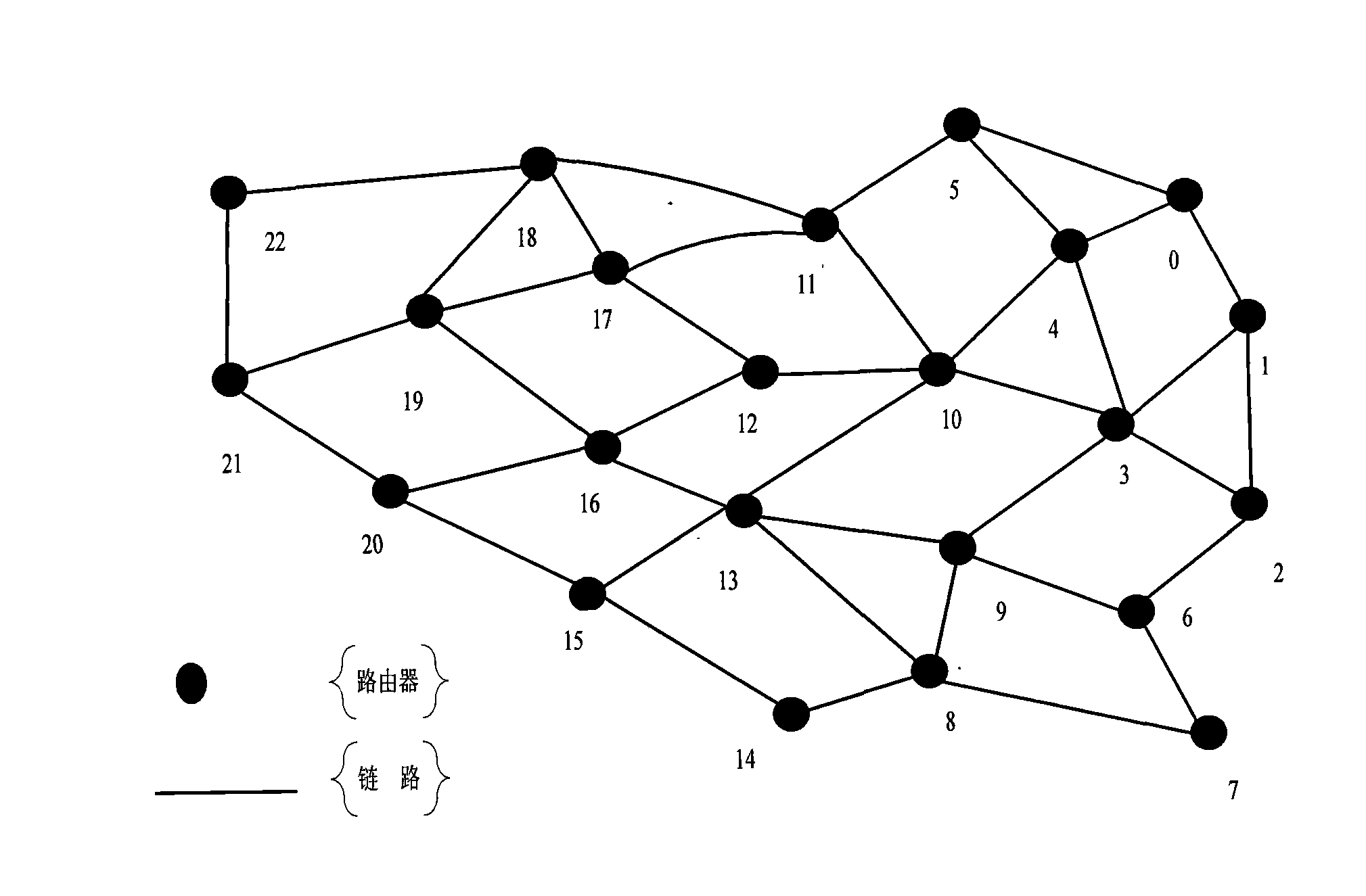Self-organizing QoS routing method based on ant colony algorithm
A bee colony algorithm and self-organizing technology, applied in the network field, can solve problems such as link bandwidth limitation and energy limitation
- Summary
- Abstract
- Description
- Claims
- Application Information
AI Technical Summary
Problems solved by technology
Method used
Image
Examples
Embodiment Construction
[0203] The routing simulation system is built on the CERNET (China Education and Research Network) topology, such as Figure 6 As shown, the parameter setting of the topology basically refers to the actual situation and has a certain degree of objectivity.
[0204] In the network model, given a routing request, run the routing method in this paper to find the route and add to the routing table, and then send data packets for a period of time according to the bandwidth value set in the routing request to obtain a trace file. Then use the distance vector (DV) routing protocol built in the NS2 system to send data at the same time according to the same source, destination node and bandwidth value, and get the trace file. Analyze the obtained trace files separately to obtain the throughput rate, end-to-end delay, jitter and packet loss rate of the data transmission path, and then calculate the user's end-to-end transmission satisfaction through the satisfaction formula combined wit...
PUM
 Login to View More
Login to View More Abstract
Description
Claims
Application Information
 Login to View More
Login to View More - R&D
- Intellectual Property
- Life Sciences
- Materials
- Tech Scout
- Unparalleled Data Quality
- Higher Quality Content
- 60% Fewer Hallucinations
Browse by: Latest US Patents, China's latest patents, Technical Efficacy Thesaurus, Application Domain, Technology Topic, Popular Technical Reports.
© 2025 PatSnap. All rights reserved.Legal|Privacy policy|Modern Slavery Act Transparency Statement|Sitemap|About US| Contact US: help@patsnap.com



